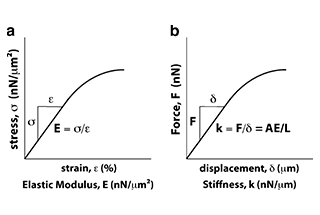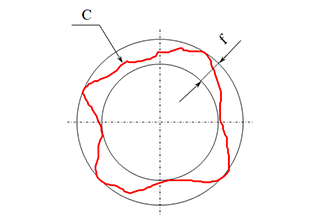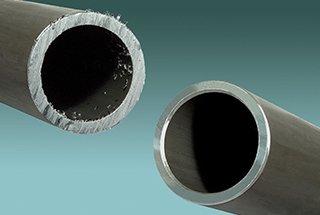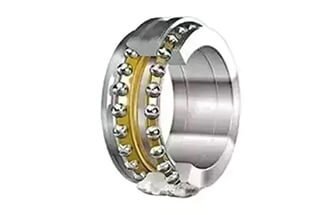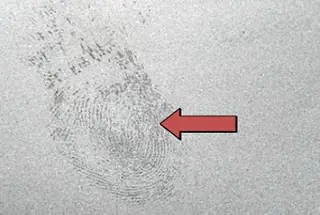
Have you ever wondered why some metal parts fail unexpectedly? Fatigue strength, a critical factor in mechanical engineering, holds the answer. In this insightful article, we delve into the fascinating world of fatigue strength and explore the various internal and external factors that influence it. Discover how understanding these factors can revolutionize the design, material selection, and manufacturing processes of high-performance components. Get ready to unravel the secrets behind the longevity and reliability of metal parts!
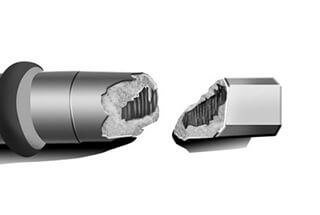
The fatigue strength of materials is highly sensitive to various internal and external factors.
External factors include the part’s shape, size, surface finish, and service conditions, while internal factors include the material’s composition, microstructure, purity, and residual stress.
A small change in these factors can cause fluctuations or significant changes in the material’s fatigue performance. Understanding the impact of various factors on fatigue strength is crucial in fatigue research.
This research provides a foundation for the proper structural design of parts, the appropriate selection of materials, and the effective implementation of cold and hot processing technologies, ensuring that parts have high fatigue performance.
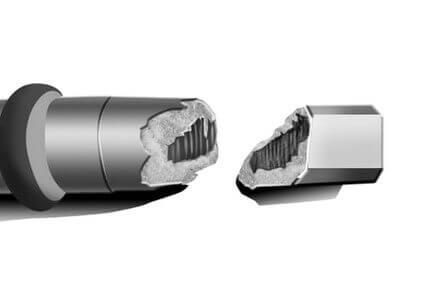
Here is the content in table form:
| Factor | Description |
|---|---|
| Stress concentration | Stress concentration is one of the main causes of fatigue failure in materials. It can be avoided by optimizing the shape, selecting smooth transition radii, and using precision machining methods to improve the surface quality of components. |
| Size factor | The larger the material size, the more difficult it is to control the manufacturing process, resulting in poorer material organization density and uniformity, and more metallurgical defects, all of which affect fatigue strength. |
| Surface processing state | Surface processing state, such as surface roughness and machining tool marks, affects fatigue strength. Surface damage can cause stress concentration and reduce the fatigue limit. |
| Chemical composition | Chemical composition has a significant impact on fatigue strength. For example, surface heat treatments such as carburizing and nitriding can improve the fatigue strength of the material on the surface of the part. |
| Heat treatment | Proper heat treatment can improve the fatigue performance of materials. For example, high-frequency quenching, carburizing, cyaniding, and nitriding can improve the fatigue strength of springs. |
| Environmental factors | Environmental humidity has a significant impact on the durability of high-strength chromium steel, and water vapor has an adverse effect on the fracture resistance of most metals and alloys. |
| Metallurgical defects | Metallurgical defects, such as the presence of inclusions, affect fatigue strength. Brittle inclusions (such as oxides, silicates, etc.) pose a significant risk to the fatigue performance of steel. |
| Corrosion | Corrosion is also an important factor affecting fatigue strength, and anti-corrosion measures need to be considered in the design and manufacturing process. |
| Microstructure | By subjecting metal materials to severe plastic deformation (SPD), microstructures such as ultrafine grains (UFG) and nanocrystalline grains (NG) can be produced, which can improve the fatigue strength of materials. |
| Load and environment | Fatigue tests can be divided into room temperature fatigue tests, high temperature fatigue tests, low temperature fatigue tests, etc., according to load and environment. Different working conditions have different effects on fatigue strength. |
The conventional method of measuring fatigue strength involves using carefully processed smooth specimens.
However, in reality, mechanical parts often have various forms of gaps such as steps, keyways, threads, and oil holes.
These notches result in stress concentration, causing the maximum actual stress at the root of the notch to be much greater than the nominal stress of the part.
As a result, the fatigue failure of the part often initiates from these notches.
Theoretical stress concentration factor Kt:
Under ideal elastic conditions, the ratio of the maximum actual stress to the nominal stress at the root of the notch is calculated based on elastic theory.
Effective stress concentration factor (or fatigue stress concentration factor) Kf:
The fatigue limit of smooth specimens (σ-1) and the fatigue limit of notched specimens (σ-1n) are evaluated.
The effective stress concentration factor is impacted not only by the size and shape of the component, but also by the physical properties, processing, heat treatment, and other factors of the material.
The effective stress concentration factor increases with the increase of notch sharpness, but it is typically less than the theoretical stress concentration factor.
Fatigue notch sensitivity coefficient q:
The fatigue notch sensitivity coefficient represents the sensitivity of the material to the fatigue notch and is calculated by the following formula:

The range of the value of q is between 0 and 1. The smaller the value of q, the less sensitive the material being characterized is to the notch.
It has been demonstrated that q is not only a constant for the material, but also depends on the size of the notch.
The value of q is only considered to be independent of the notch when the radius of the notch is larger than a specific value, which varies for different materials or treatment states.
The inhomogeneity of material structure and the presence of internal defects result in an increased likelihood of failure as the size of the material increases, thereby lowering its fatigue limit.
The phenomenon of size effect is a significant issue when extrapolating fatigue data from small laboratory specimens to larger practical parts.
It is not possible to replicate the stress concentration and stress gradient of actual-sized parts on small samples, leading to a disconnect between the results obtained in the laboratory and the fatigue failure of certain specific parts.
The machined surface always contains uneven machining marks, which act like tiny gaps, leading to stress concentration on the material surface and reducing its fatigue strength.
Research shows that for steel and aluminum alloys, the fatigue limit of rough machining (rough turning) is reduced by 10% to 20% or more compared to longitudinal polishing.
Materials with higher strength are more sensitive to the surface finish.
In reality, no part operates under a strictly constant stress amplitude.
Overloading and secondary loads can impact the fatigue limit of materials.
Studies show that overload damage and secondary load training are prevalent in materials.
Overload damage refers to a decrease in the fatigue limit of a material after it has undergone a certain number of cycles under a load that is higher than its fatigue limit.
The greater the level of overloading, the quicker the damage cycle occurs, as depicted in the figure below.

Overload damage boundary
In certain conditions, a limited number of instances of overloading may not cause damage to the material.
Due to the effects of deformation strengthening, crack tip passivation, and residual compressive stress, the material is also strengthened, thereby improving its fatigue limit.
Thus, the idea of overload damage should be revised and modified.
The phenomenon of secondary load training refers to an increase in the fatigue limit of a material after a certain number of cycles under stress that is below the fatigue limit but above a certain limit value.
The impact of secondary load training depends on the properties of the material itself.
In general, materials with good plasticity should have a longer training cycle and be subjected to higher training stress.
Fatigue strength and tensile strength have a strong correlation under certain conditions.
Consequently, under specific conditions, any alloy elements that enhance the tensile strength can also improve the fatigue strength of the material.
Among the various factors, carbon has the most significant impact on the strength of materials.
However, some impurities that form inclusions in steel can have a negative effect on the fatigue strength.
The effect of heat treatment on fatigue strength is largely the effect of microstructure, as different heat treatments result in different microstructures.
Although the same composition of materials can achieve the same static strength through various heat treatments, their fatigue strength can vary greatly due to different microstructures.
At a similar strength level, the fatigue strength of flake pearlite is noticeably lower than that of granular pearlite.
The smaller the cementite particles, the higher the fatigue strength.
The impact of microstructure on the fatigue properties of materials is not just related to the mechanical properties of various structures but also to the grain size and distribution characteristics of the structures in the composite structure.
Grain refinement can enhance the fatigue strength of the material.
The presence of inclusions or holes created by them can act as tiny notches, causing stress and strain concentration under alternating load, and become the source of fatigue fractures, negatively impacting the fatigue performance of materials.
The impact of inclusions on fatigue strength is dependent on various factors, including the type, nature, shape, size, quantity, and distribution of the inclusions, as well as the strength level of the material and the state and level of the applied stress.
Different types of inclusions have unique mechanical and physical properties, and their effect on fatigue properties varies. Plastic inclusions, such as sulfides, tend to have little impact on the fatigue properties of steel, while brittle inclusions, such as oxides and silicates, have a significant adverse effect.
Inclusions with an expansion coefficient larger than the matrix, such as sulfides, have less impact due to compressive stress in the matrix, while inclusions with a smaller expansion coefficient than the matrix, such as alumina, have a greater impact due to tensile stress in the matrix. The compactness of the inclusion and the base metal also affects fatigue strength.
The type of inclusion can also influence its impact. Sulfides, which are easy to deform and well-combined with the base metal, have less impact, while oxides, nitrides, and silicates, which are prone to separation from the base metal, result in stress concentration and have a greater adverse effect.
The impact of inclusions on the fatigue properties of materials varies under different loading conditions. Under high load, the external load is sufficient to induce plastic flow in the material, regardless of the presence of inclusions, and their impact is minimal.
However, in the fatigue limit stress range of the material, the presence of inclusions causes local strain concentration and becomes the controlling factor of plastic deformation, significantly affecting the fatigue strength.
In other words, inclusions primarily impact the fatigue limit of the material and have little effect on the fatigue strength under high stress conditions. To improve the fatigue performance of materials, purification smelting methods, such as vacuum smelting, vacuum degassing, and electroslag remelting, can be used to effectively reduce the impurity content in steel.
In addition to the surface finish mentioned previously, the influence of surface state also encompasses changes in surface mechanical properties and the effect of residual stress on fatigue strength.
The alteration of mechanical properties of the surface layer may be due to different chemical composition and microstructure of the surface layer, or from deformation strengthening of the surface.
Surface heat treatments, such as carburizing, nitriding, and carbonitriding, can not only increase the wear resistance of components but also improve their fatigue strength, particularly their resistance to corrosion fatigue and pitting.
The impact of surface chemical heat treatment on fatigue strength depends largely on the loading mode, the concentration of carbon and nitrogen in the layer, surface hardness and gradient, the ratio of surface hardness to core hardness, the depth of the layer, and the size and distribution of residual compressive stress formed during surface treatment.
Numerous tests have shown that, as long as a notch is machined first and then treated with chemical heat treatment, generally speaking, the sharper the notch, the greater the improvement in fatigue strength.
The effect of surface treatment on fatigue properties varies based on the loading mode.
Under axial loading, there is no uneven stress distribution along the depth of the layer, meaning that the stress on the surface and below the layer is the same.
In this scenario, surface treatment can only improve the fatigue performance of the surface layer, as the core material is not strengthened, thus limiting the improvement in fatigue strength.
Under bending and torsion conditions, stress is concentrated on the surface layer and the residual stress from surface treatment and external stress are superimposed, reducing the actual stress on the surface.
At the same time, the strengthening of the surface material improves the fatigue strength under bending and torsion conditions.
In contrast, chemical heat treatments like carburizing, nitriding, and carbonitriding can greatly reduce the fatigue strength of the material if the surface strength of the component is reduced due to decarburization during heat treatment.
Similarly, fatigue strength of surface coatings, such as Cr and Ni, decreases due to the notch effect caused by cracks in the coatings, residual tensile stress caused by the coatings in the base metal, and hydrogen embrittlement caused by hydrogen absorption during the electroplating process.
Induction quenching, surface flame quenching, and shell quenching of low hardenability steel can result in a certain depth of surface hardness layer and form favorable residual compressive stress on the surface layer, making it an effective method for improving fatigue strength of components.
Surface rolling and shot peening can also create a certain depth of deformation hardening layer on the surface of specimens and produce residual compressive stress, which is also an effective way to enhance fatigue strength.
Improving the fatigue strength of materials through the optimization of surface processing conditions can be achieved in several ways:
Introducing residual compressive stress: Near the end of the component processing, methods such as shot peening are used to introduce a certain magnitude and depth of compressive stress. This can effectively improve surface integrity and increase fatigue life and strength. It is widely accepted that residual compressive stress is a critical strengthening mechanism for enhancing the fatigue resistance and stress corrosion resistance of engineering materials.
Optimizing surface deformation: The pursuit of nanoscale processing hardening can sacrifice ductility for strength, but it accelerates crack propagation, which is detrimental to fatigue. Therefore, excessive pursuit of the hardening effect of surface deformation should be avoided to prevent adverse impacts on fatigue performance.
Rolling strengthening: As one of the mechanical surface strengthening techniques, the rolling strengthening process can effectively enhance the fatigue performance, wear resistance, corrosion resistance, and damage tolerance of materials. This technique has been applied to surface modification treatments such as those for aircraft engine blades.
Surface modification technologies: Through surface modification technologies, material surface hardness, wear resistance, and corrosion resistance can be enhanced while reducing the probability of fatigue damage. Optimizing the integrity of the material can reduce internal defects and residual stress, thereby improving its fatigue performance.
Influence of heat treatment and microstructure: Different heat treatment states yield different microstructures, so the effect of heat treatment on fatigue strength is essentially the influence of the microstructure. By controlling the heat treatment process, a microstructure more conducive to enhancing fatigue strength can be obtained.
The specific impact of environmental humidity on the fatigue strength of different materials is primarily reflected in the following aspects:
For high-strength chromium steel, environmental humidity has a significant impact on its durability. Under certain damp and hot conditions, the fatigue life of the material is affected, accelerating crack propagation.
The fatigue performance of metal materials is also affected by the surrounding environment, especially in the case of corrosion fatigue. This refers to the response of metal materials under the interactive effects of corrosive media and cyclic loads, often used to describe the fatigue behavior of materials in aqueous environments.
Studies on the tensile fatigue performance of carbon fiber composite laminates under different environmental conditions (such as room temperature dry state, low temperature dry state, and high temperature humid state) indicate that damp and hot environments are one of the main factors affecting the mechanical properties of these composite materials.
Research on the degradation trend and mechanism of the fatigue performance of CFRP (Carbon Fiber Reinforced Polymer) in a damp and hot environment shows that such conditions cause different forms and degrees of damage to the CFRP’s matrix, fibers, and fiber-matrix interface, leading to the degradation of CFRP’s mechanical properties.
Under a 60℃/95% RH environment, the fatigue performance of CFRP/aluminum alloy adhesive joints decreases with the increase of aging time, and the decline in fatigue strength is more noticeable in the early stages of aging.
Studies have found that damp environments have a significant impact on both the mechanism and degree of fatigue damage. The higher the relative humidity, the more severe the fatigue damage.
The effects of corrosion on the fatigue strength of metals and alloys under different environmental conditions are mainly reflected in the following aspects:
Impact of pre-corrosion: Pre-corrosion can significantly affect the fatigue S-N curve and fatigue crack initiation behavior of aluminum alloys, but it has no impact on crack propagation behavior. The crack initiation life after pre-corrosion only accounts for less than 20% of the total life, leading to a sharp decline in fatigue life.
Deformation in corrosive environments: Medical metal materials undergo certain deformation during fatigue processes in conventional air environments. However, this deformation is exacerbated in corrosive environments, thereby affecting fatigue performance.
Wear and corrosion in marine environments: Studies on the corrosion and wear properties of metal materials in marine environments indicate that the wear mechanism gradually transitions from abrasive wear to a mechanism dominated by wear-accelerated corrosion fatigue.
Decrease in fatigue strength in erosive environments: In erosive environmental conditions, the degree of decrease in the fatigue strength of metals or alloys depends on the condition of the environment and test conditions. For example, the apparent fatigue strength limit observed in steel in air is no longer apparent in corrosive environments.
Corrosion fatigue characteristics in harsh atmospheric corrosion environments: There are still many issues to be studied in the field of corrosion fatigue failure of aluminum alloys under the coupling of harsh atmospheric corrosion environments and high-speed rail dynamic load conditions. This indicates that corrosion has a significant impact on the fatigue strength of metals and alloys in these specific environments.
S-N curve characteristics of corrosion fatigue: The S-N curve of corrosion fatigue has no horizontal part, indicating that the corrosion fatigue limit is the value under a certain life, that is, there is only a conditional corrosion fatigue limit. This suggests that the factors affecting fatigue strength in a corrosion environment are more complex than in air.
Fatigue performance in specific corrosive environments: Studies on the fatigue performance of aerospace aluminum alloy materials in a 3.5% NaCl corrosion environment indicate that the fatigue performance in a corrosive environment has a significant impact on the fatigue strength of metals and alloys.
The influence of microstructure (ultrafine grains, nanograins) on the fatigue strength of metal materials is mainly reflected in the following aspects:
The relationship between grain size adjustment and fatigue strength:
Research indicates that for materials of a specific composition, when their grain size is adjusted over a broad range to change strength, the fatigue strength of the material will increase with the increase in tensile strength, and then decrease. This implies that within a certain range, reducing the grain size can enhance the material’s fatigue strength, but when the grain size is reduced to a certain extent, excessively refined grains may lead to a decline in fatigue strength.
The effect of grain boundary volume fraction:
Ultrafine grain and nanometal materials have small grains and a large grain boundary volume fraction, which gives them unique and excellent properties. However, these materials produce a large number of defects during the grain refinement process, leading to significant reductions in toughness and plasticity, the disappearance of work hardening capability, thereby affecting low-cycle fatigue performance.
The impact of plastic deformation on fatigue strength:
By subjecting metal materials to severe plastic deformation (SPD), microstructures such as ultrafine grains and nanograins can be produced, thereby improving the material’s fatigue strength. However, after being treated with SPD, the fatigue strength of pure metals represented by copper seems to reach a saturation value, indicating that there are certain limitations to further improving fatigue strength by optimizing the SPD process.
The role of stacking fault energy:
During cyclic deformation, with the decrease in stacking fault energy, the microstructural instability caused by grain growth and the highly strain-localized shear bands both show noticeable improvement. This suggests that the microscopic mechanism of fatigue damage of the material will gradually shift from grain boundary migration-dominated grain growth to other forms, affecting fatigue performance.
The difference in fatigue performance under stress control and strain control:
Refining the grains of metal materials into ultrafine grains or nanograins can improve their high-cycle fatigue performance under stress-controlled conditions, but often reduces their low-cycle fatigue performance under strain-controlled conditions. This is mainly because after the grains are refined to the submicron or nanometer level, the microstructure of the material changes, affecting fatigue performance.

